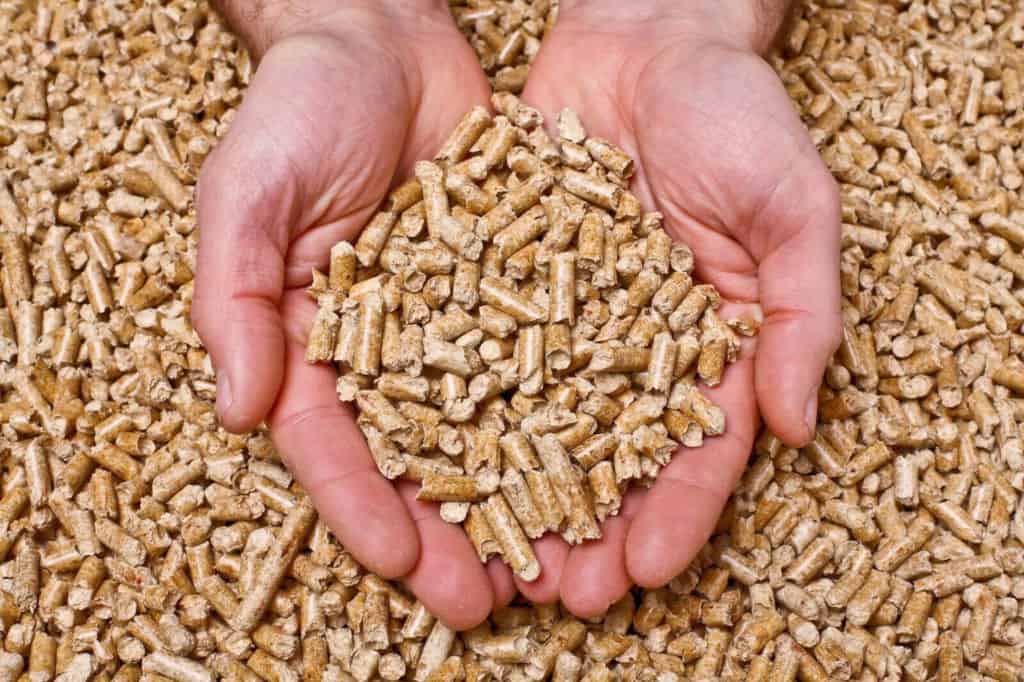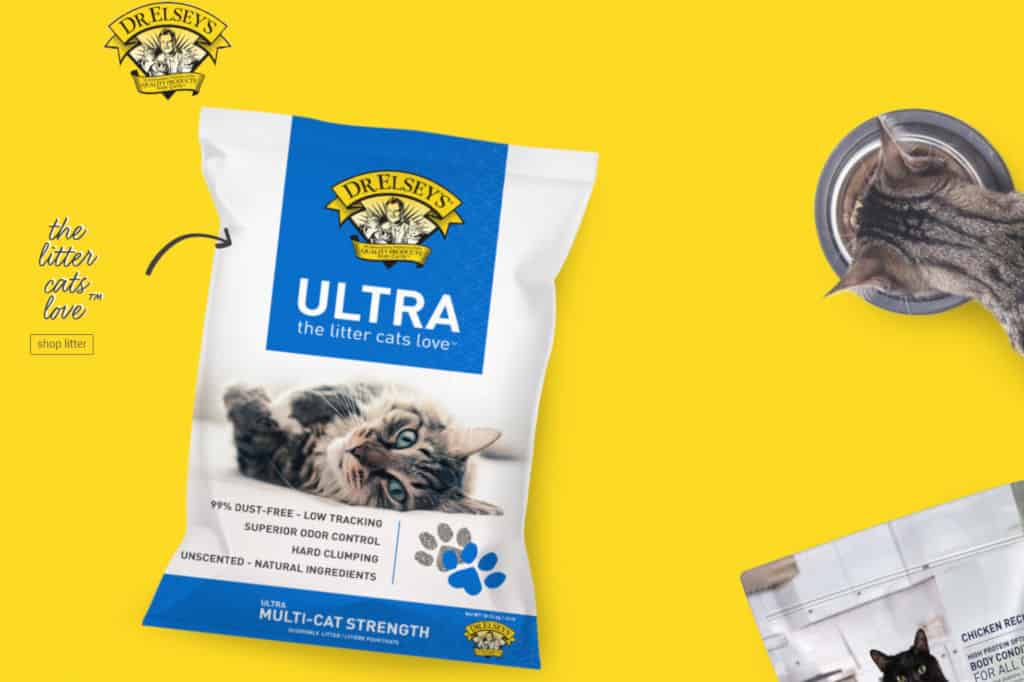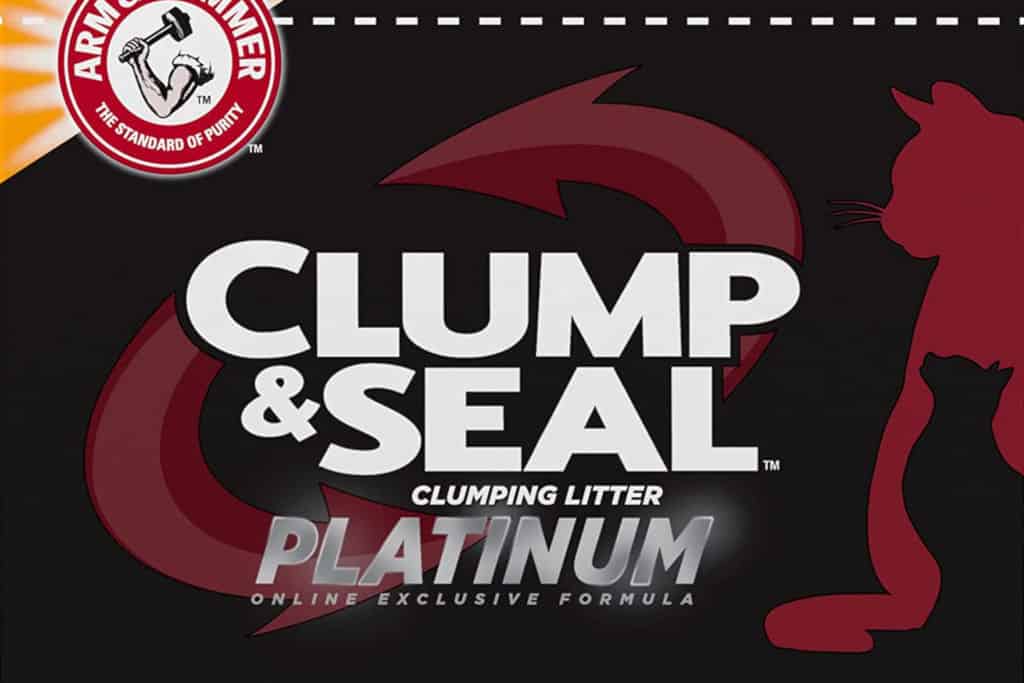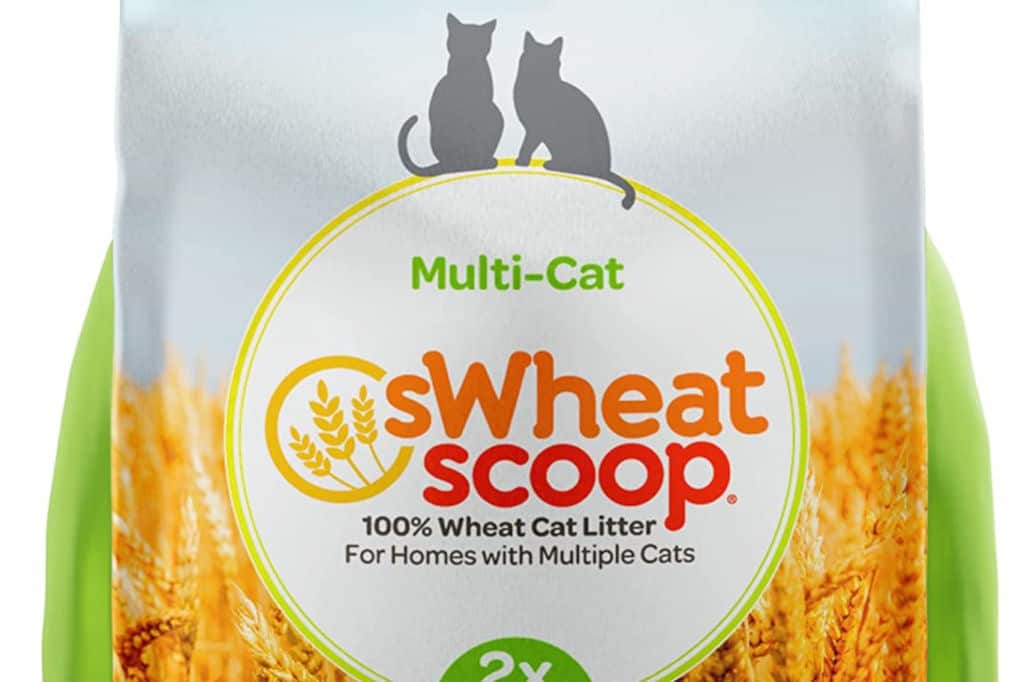Disclosure: We may earn a commission from helpful, relevant links in our content. No cost to you. See our privacy policy.
We smell things more easily when it’s humid, which could explain why the urine smell is so intense. It is essential to know which litter to choose and how to make it more effective in reducing odor.
How Does Humidity Affect Cat Litter?
High humidity levels can cause clumping cat litter to become too moist and break apart, making it less effective at absorbing odors and moisture. This can lead to a smelly litter box and potentially create health issues for your cat.
Moreover, the dampness from humidity can also encourage the growth of bacteria in the litter, posing a risk of urinary tract infections in cats.
What litter to choose for high humidity? In humid areas, non-clumping litter may be best, as clumping litter is more likely to break apart and become ineffective in high humidity. Non-clumping litters, such as those made from corn, wheat, or paper, are more absorbent and can handle moisture better than clumping litter.
However, they have drawbacks, such as beginning to smell faster or growing fungus, which is why you may want to keep in mind these things:
- Non-clumping litter may need to be changed more frequently.
- Clumping litter with moisture absorbents may be a better alternative.
- Another option is to use a litter made from silica gel crystals, which have excellent moisture-absorbing properties and are less likely to break down in high humidity conditions. But they have their own drawbacks.
- Getting a renewable dehumidifier may be your best option. With a dehumidifier, any litter will perform better. This budget friendly Eva-Dry lasts up to 4 weeks before recharge, or try this LAOVER Dehumidifier with extra savings options. Looking for something powerful yet affordable? Go for NineSky!
This article gives the best cat litter for humid environments and tips for choosing litter in damp areas. We’ve also included additional “pro-tips” to make it easier for you to deal with the problem of humidity and cat litter odor.
What to Look for When Choosing Cat Litter for Humid Areas?
Things to look for when choosing suitable cat litter in humid environments:
- Absorbency. Look for a highly absorbent litter that can handle high moisture levels effectively.
- Dustiness. Choose a litter that is low dust, as high humidity can cause the litter to become powdery and increase the amount of dust in the air.
- Odor control. Opt for a litter with good odor control properties, as high humidity can cause odors to become more pronounced.
- Material. Consider non-clumping litters made from materials such as corn, wheat, paper, or silica gel crystals. However, some clumping litters work well in humid environments, too.
- Affordability. Choose a litter that fits within your budget and provides good value for your money.
- Cat preferences. Finally, consider your cat’s preferences, as some cats may prefer certain types of litter over others, regardless of clumping/non-clumping or materials.

What Is the Best Moisture-Absorbing Cat Litter?
- Dr. Elseys Ultra (with silica gel packs)
- Fresh Step Non-Clumping Crystals
- Yesterday’s News Unscented Litter
- Arm & Hammer Clump and Seal Platinum
- sWheat Scoop Cat Litter
1. Dr. Elseys Ultra (with silica gel packs)

Dr. Elseys Ultra Premium is a quality litter made from 100% bentonite clay that provides excellent clumping and odor control. This one dries incredibly fast. The solid clumping, low dust, and odor control properties effectively maintain a fresh and hygienic litter box in various conditions, including humid ones.
Hard clumping, medium-grain clay litter effectively stops moisture from seeping to the bottom of the tray, making it easier to scoop, which could be especially beneficial in a humid environment where moisture buildup can quickly lead to odors and hygiene issues.
Additionally, the unique formulation of medium-grain clay helps keep litter in the box, which could help minimize the spread of litter and associated moisture throughout the room.
Pro tip: Keep some desiccant silica gel packs and zeolite in a mesh bag in the drawer to absorb ammonia odors and aid with humidity. Change those every 4-6 months, or get color-changing silica gel packs if you’re unsure when to change them.
Highlights:
- Made of 100% bentonite clay for clumping and odor control.
- Quick drying and low dust formula.
- Hard clumping prevents moisture buildup in humid environments.
- Helps maintain a fresh and hygienic litter box.
- Keeps litter in the box to minimize spread.
- Tip: Use silica gel packs to absorb ammonia odor.
2. Fresh Step Non-Clumping Crystals

Fresh Step crystal litter holds odor effectively and has minimal tracking from the litter box. The crystals are designed to absorb urine, keeping the litter box smelling fresh. One of the significant advantages of Fresh Step is its ability to control odor. The crystals absorb urine and leave solid waste, keeping the litter box smelling fresh.
Additionally, it has minimal dust compared to other crystal litters, making it a good choice for those sensitive to dust. The crystals are lightweight and easy to scoop, which makes cleaning the litter box a breeze. Opt for a slotted scoop, which ensures unused crystals fall back into the box, prolonging the litter’s lifespan.
The litter is also easy to stir, ensuring that the crystals absorb effectively.
However, it does require more attention than clay litter, as it needs to be scooped and stirred daily for the best performance. The litter lasts about a month with proper maintenance. It is also important to note that Fresh Step is not dust-free and should be used cautiously around younger kittens.
Pro tip: Stir the litter daily to maintain its effectiveness in absorbing odors and urine. Stirring the litter also helps to prevent the crystals from becoming over-saturated and losing their absorbing power. This daily maintenance will ensure that the litter lasts as long as possible and continues to control odors in the litter box effectively.
Highlights:
- Minimal dust, good for dust sensitivity.
- Lightweight and easy to scoop.
- Controls odor effectively with urine-absorbing crystals
- Minimal tracking compared to other crystal litters
- Needs daily attention to maintain its performance
- Lasts a month with proper maintenance.
- Not dust-free, use cautiously around younger kittens.
- Tip: Stir daily to maintain odor control and absorbency.
3. Yesterday’s News Unscented Litter

Yesterday’s News Unscented Litter is a good option for humid environments because it is unscented, made of paper, and not dusty. Here is the breakdown of why it’s a good option.
Firstly, it is unscented, which is necessary for cats with sensitivity to litter perfumes. Secondly, it is made of paper, which is a safe and proper material for cats to use as a litter. Thirdly, it is not dusty, and the paper pellets are firmly formed, which is vital for cats’ respiratory health.
It is easy to use, as it allows you to see what is wet and what is not, and it scoops out easily. In addition, the cats like it as it is gentle on their paws and enjoy digging in it. Finally, it doesn’t track as badly as some other litters and is good for cats with allergies or problems with dust.
Pro tip: Remove the solid waste immediately and liquid waste every day or two. If you don’t change the litter regularly, it can become smelly. But if you do, there is no smell buildup, and you can go for a long period before cleaning out the entire tray.
Highlights:
- Unscented, safe for cats with sensitivities.
- Made of paper, safe for cat’s paws and respiratory system.
- Low dust, good for cats with allergies.
- Easy to use, scoops easily, cats enjoy digging in it.
- Minimal tracking, keeps litter area clean.
- Regular maintenance prevents odor buildup.
- Wet clumps easily visible, easy to remove.
- Tip: Daily maintenance prevents odor buildup
4. Arm & Hammer Clump and Seal Platinum

Arm & Hammer litter maintains great clumping, low dust, and easy cleaning. This litter has a unique, moisture-activated odor control system that helps control odors even in humid environments. It is also low dust and forms hard clumps for easy scooping.
In addition, Arm & Hammer clumps well and is easy to scoop, making litter maintenance much easier. The consistency of the litter is also fine and sandy, which encourages even the most reluctant cats to dig and cover in the litter box. Moreover, it tracks less than other litters, reducing the litter scattered around the house.
The humidity increases the ammonia scent by the end of the day. I don’t smell it as much now that I’ve switched to Arm & Hammer. I’ve observed a significant decrease in tracking. It practically glides out when it’s time to clean the litter box.
Pro tip: Clean the litter box once a day. Consider mixing baking soda into the kitty litter. A cup in the bottom before adding more litter and some mixed in. And you can add a little more as the smell develops. Try Arm & Hammer baking soda formulated specifically for litter boxes. You can substitute normal baking soda when you don’t have the nice stuff.
Highlights:
- Great clumping, easy cleaning, and low dust.
- Moisture-activated odor control system.
- Fine and sandy consistency.
- Encourages digging and covering.
- Tracks less than other litters.
- Ammonia smell reduced.
- Easy to scoop and clean.
- Tip: Mix in baking soda for extra odor control.
5. sWheat Scoop

This cat litter is wonderful and lacks the unpleasant strong chemical perfume seen in many litters. It has no odor and is one of the greatest litters I’ve ever used for humidity and odor control. It’s just ground wheat that clumps pretty well. It is created from recycled wheat and has a long shelf life.
Light, natural, dust-free, and simple to cleanly and swiftly sift. Remember that the efficiency of sWheat Scoop in humid situations may be affected by factors such as litter box ventilation, frequency of cleaning and usage, and individual cat preferences.
If your litter box room has 60% or more humidity, a dehumidifier is one of the best purchases you can make. Get a dehumidifier, such as this LAOVER Dehumidifier, or this quiet and powerful NineSky and set it to 50%.
Pro tip: If you use Litter Robot, keep in mind that organic litter, such as this one, does not work well with it. These litter kinds also retain moisture, which can corrode the metals and wiring inside the base.
Highlights:
- No overpowering chemical scent
- Good odor control
- Clumps well
- Dust-free
- Made of recycled wheat
- Light and natural
- Tip: Do not use with Litter Robot.
FAQs
Things to keep in mind regarding the safety
Here are a few things to keep in mind regarding safety with cat litter in humid environments:
- Change the litter frequently. Regularly changing the litter can help prevent the buildup of bacteria and unpleasant odors.
- Monitor for mold. Keep an eye out for any signs of mold growth, such as a musty odor or discoloration of the litter. If you suspect mold, discard the affected litter and clean the litter box thoroughly.
- Avoid over-filling the litter box. Overfilling the litter box can lead to increased moisture levels and a higher risk of mold growth.
- Ensure proper ventilation. Ensure the litter box is located in a well-ventilated area to help reduce humidity levels and prevent mold growth.
- Use a moisture-absorbing material. Consider placing a moisture-absorbing material, such as silica gel, in the bottom of the litter box to help absorb excess moisture.
- Consider alternative litter options. If you cannot control humidity levels in the environment where the litter box is kept, consider using a different type of litter or switching to a non-organic litter, such as one made from silica gel crystals.
- Avoid contact with litter. Encourage your cat to avoid direct contact with the litter as much as possible, as it may contain harmful microorganisms in humid conditions.
Remember, the safety and health of your cat are of the utmost importance. If you have concerns about your cat’s litter or are experiencing persistent issues with humidity, it’s best to consult a veterinarian for guidance.
How often to change cat litter in high humidity?
The frequency of changing cat litter depends more on the type of litter used and the number of cats using the litter box rather than the humidity levels. Clumping litter should be changed once a week, and non-clumping litter should be changed every two to three days or as needed when it becomes too dirty. Scoop daily, or whenever required.

How do cats deal with high humidity?
In high humidity, cats may seek out cooler and more ventilated areas, pant to increase evaporation and cool down, or lick their fur to increase evaporation. Additionally, cats may drink more water to replace fluids lost through panting.
Can cat litter act as a dehumidifier?
Cat litter can act as a dehumidifier but an ineffective one. Filling a sock with cat litter and placing it under your car seat might help to reduce fogging of windows, but this trick may not work in the house.
While kitty litter has absorbing capabilities, a genuine dehumidifier is preferable. Get a dehumidifier and a few low-speed box fans. This will reduce humidity in the home or other confined locations.
Do cats prefer crystal or clay litter?
When living in a humid area, it is best to place the cat litter box in a well-ventilated room that is not too damp. Avoid placing the litter box in areas prone to moisture buildups, such as basements or bathrooms. Choose a room with access to fresh air and good air circulation, such as a laundry or mudroom.
Alex, a passionate animal lover, has experience in training and understanding animal behavior. As a proud pet parent to two dogs and three cats, he founded AnimalReport.net to share insights from animal experts and expand his knowledge of the animal kingdom.




